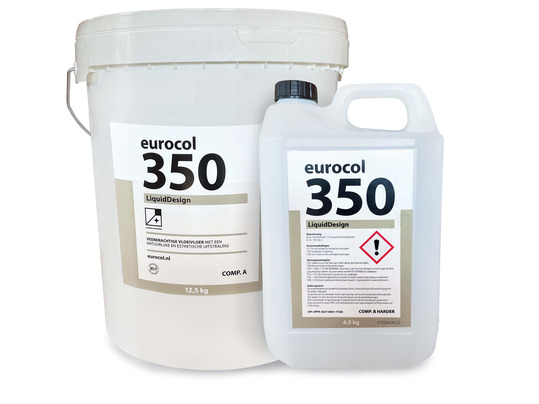eurocol
350 LIQUIDDESIGN
A resilient liquid floor with a natural look & feel and aesthetic appearance. 2-component liquid mass with a balanced mixture of natural components such as cork, wood flour, modified castor oil and binding agents based on renewable raw materials. Available in 22 modern colours.









